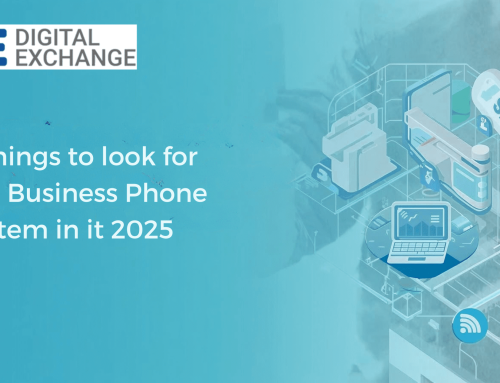The Big Switch Off refers to the planned shutdown of the Public Switched Telephone Network (PSTN) and ISDN and PSTN lines by 2027. This means that traditional landline phone services will no longer be available, and all phone services will need to transition to digital solutions like VoIP (Voice over Internet Protocol). A reliable broadband connection is essential for this transition, ensuring that VoIP services and other digital communication methods function optimally. This change is significant for both consumers and businesses, as it will require upgrading existing infrastructure to support new technologies. As the PSTN network is phased out, businesses and consumers will need to ensure they have a stable internet connection to support these new technologies.
The switch-off will impact not only phone lines but also telephone systems that rely on the traditional network. This transition will also affect traditional phone lines, which have been used for making phone calls and other services for decades. Devices that depend on the old network will need to be replaced or upgraded to continue functioning. The shift to digital services will enhance the quality and reliability of voice calls, making communication more efficient.
Why is the Big Switch Off Happening?
The Big Switch Off is happening because the traditional telephone network is outdated, fragile, and increasingly difficult to maintain. The PSTN is a relic of the 20th century and simply cannot keep pace with the modern communication needs of today. With the rise of mobile and internet communications, the way we use phones has drastically changed. Modern phone services require advanced technologies that traditional phone lines just can’t deliver. Upgrading to a more efficient and reliable communication infrastructure is essential, and the switch-off is a necessary step in this evolution.
Why is the big BT public switched telephone network switch off delayed?
Why is the big BT switch off delayed beyond the December 2025 original deadline? Well mostly it’s because BT just aren’t ready to replace all of the existing copper services (such as the Public Switched Telephone Network-PSTN and Integrated Services Digital Network-ISDN) with replacement fibre ones. This delay also impacts the rollout of new broadband services, which are essential for the transition to digital communication methods. So they can’t So they can’t just switch off the old network!
In essence, the delay is mainly in response to concerns raised by vulnerable people who rely on the copper network broadband service to keep them alive, healthy and monitored. These copper-based services include personal alarms which didn’t work during the initial switch-off. There are still up to 2 million people using personal alarms in the UK which rely totally on copper landlines. The new timeline aims to resolve some of the problems in order to provide a more seamless transition over to the new network.
Is that the only reason?
The simple answer is no. The main categories of reasons could be defined using Readiness, Money and COVID. The COVID pandemic substantially disrupted the ability to change things during that period, which added delays to the rollout. In terms of readiness, there are lots of areas of the country that are absolutely ready for the big switch off, but there are also areas that are still massively reliant on old copper based analogue phone lines there are also many, many people that need training to allow them to understand what is happening. Cost comes into play when businesses and residents need to switch. There is usually a cost involved in switching and not everyone is financially equipped to complete the changes at the same time.
Impact on Businesses and Consumers
The Big Switch Off will have a significant impact on both businesses and consumers who rely on traditional phone lines for their communication needs. Businesses will need to upgrade their phone systems to IP telephony to stay connected, while consumers will need to switch to VoIP services to maintain their home phone connections. This transition will also affect various industries, including security, retail, and healthcare, which depend on traditional phone lines for critical services such as alarms, door entry systems, and CCTV.
To prepare for the Big Switch Off, it’s crucial for businesses and consumers to start planning now. This includes upgrading broadband connections, changing devices, and switching to VoIP services. The switch-off represents a significant upgrade to the UK’s telecoms infrastructure, and being proactive will ensure a smooth transition. Key dates should be noted, and actions should be taken to avoid any disruption in communication services.
When is the new BT integrated services digital network switch off delayed until?
The current deadline is now set to 31st January 2027, more than a year later than the original 2025 deadline. It does mean that businesses (and residential customers) have quite a bit more time to get their houses in order to switch to newer, fibre-based internet and telecoms solutions.
Why can’t I keep my traditional phone line?
Copper is old technology, including the traditional phone line. Fibre is the replacement technology. BT can’t afford to continue to maintain and support both networks without massive price hikes for all customers. So they have to decide a date by which everyone must transition.
What should I do to prepare for the new deadline?
What should I do to prepare for the new deadline? If you’re a business, the answer is quite simple, get on with bringing in the new type of connection that suits your requirements IF it’s available in your area. Ensuring a reliable internet connection is crucial for this transition. You don’t want to be left rushing around at the deadline to try to get something in place – there will be lots of businesses that do that and everyone will be competing for limited installation slots. How should you do this?
- Work with your existing connectivity provider (or the Digital Group!) to assess your current systems. Find out what type and speed of connection you are running and what things within your premises rely on the connections you have. Think about things like fax machines, lift alarms, premises alarms that all might be using your traditional phone line to communicate with the outside world.
- Work with your provider to research which type of new connection would be suitable for your business. You should base this on speed and budget.
- Make a migration plan. Map out the steps required to transition from old tech to new and include timelines in this plan. Think about getting rid of old fax machines and lift alarms sooner rather than later. Get those dealt with so that the eventual switch is much easier.
- Think about training, if you are changing equipment and so on, might your staff need to be re-trained on how to use the new equipment or service?
- Don’t delay. Just because BT are allowing people to delay, doesn’t mean that you should. Seriously, what are you still waiting for?!
Summary
As we’ve reiterated several times through this article, we genuinely believe that the right thing for businesses to do is to ignore the delay. Get your plan in place despite the delay, Upgrading your broadband connection is a key step in this process. don’t wait for it to bite you on the bum. If the newer technologies are available in your area, which not start planning your switch today?
Get in touch with Digital Exchange to discuss how we can help you to get rid of this headache by helping you transition seamlessly to newer connectivity products, including a reliable VoIP service! ! Feel free to drop us a line via the contact page here or call us on 01142203000. Digital Exchange have been installing and configuring connectivity solutions for businesses in Sheffield and across the UK for over 20 years. Talk to our experts about how we might be able to help you.







